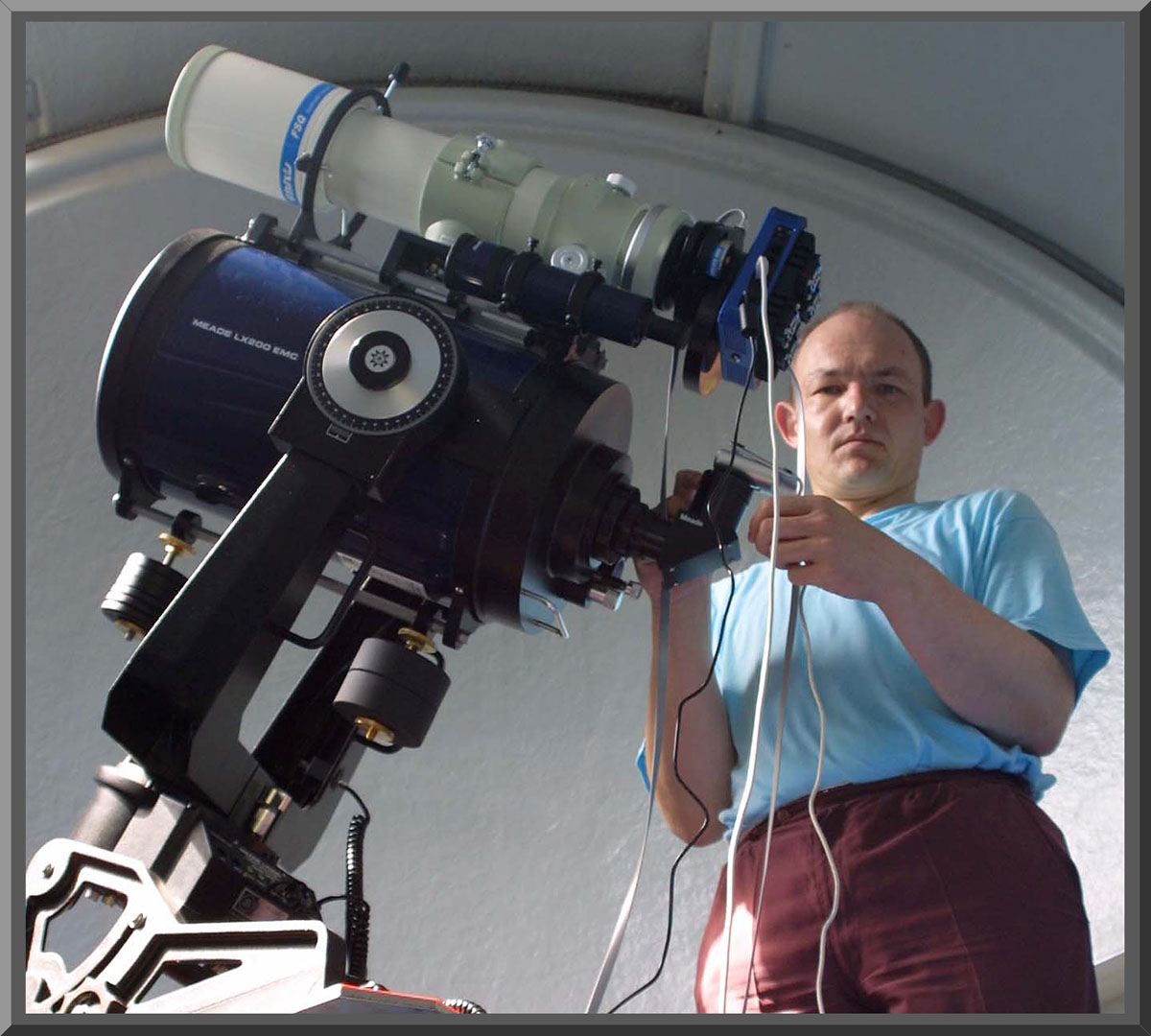|
Contact information
website
http://www.jt-astrosingularity.info/
.
Locator Map
http://www.frappr.com/apppublic
Level of accuracy: town of
Ferdinandshof
Biography
My interest in the
astronomy was woken up in my childhood by my father. My father drew the
attention of me as a child to the treasures of the night sky. I dealt
thenceforward with the astronomy in my spare time. My first telescope
originated from a lens (D=80mm) of Zeiss and two oculars. I built from
this lens with the help of my father a refractor with equatorial mount.
With this refractor I observed much visually the night sky. I observed in
particular variable stars. Beside the night observation I started to read
a lot. In particular Einstein and the consequences of his theory of
relativity on the explanation of the universe occupied me. The more I read
about the astronomy, the more I saw and felt with every new sight of the
clear night sky. With every new observation night this perception became
more intensive.
This originated the wish to document the visually perceived one
photographically.
In 1997 I put for my future
astrophotography the foundation-stone. I decided to install LX200 in my
place of residence a MEADE 10 “. In 2001 still the building of my
observatory followed this decision. In 2003 I acquired an U6 of the Apogee
(follower of the AP6) and the Focuser and the filter wheel of FLI. Now
with it I was able to run CCD-Imaging independently.
The big astrophotographer
David Malin impressed me quite early by his color astrophotography. In his
images I could feel with the respect the same what I felt with every new
sight of the clear night sky. The infinity of the universe was expressed
in their full beauty.
The technical process of the
CCD-Imaging is very demanding and instructive. For my first steps the
articles of Robert Gendler gave me input to optimize my approach with the
CCD-Imaging.
Since I run CCD-Imaging, my observations of the clear night sky are
reproducible. With thus I mean the following: I am in my observatory. The
telescope and the CCD camera are built up and the first absorption series
runs. If I look from the dome and look at the clear night sky, the
infinity of the universe comes in its beauty very near me. She becomes
conceivable. The earthly moves in this moment are in a wide distance.
Space and time qualify itself from all earthly and extraterrestrial in the
infinity in the universe. These thoughts and sensations reproduce
themselves when I edit the CCD absorption on the computer and draw of my
images the stars, fogs and galaxies of the universe.
Areas of interest
High
resolution deep sky CCD imaging (in particular galactic nebula),
observation technology (Hyper-/Deltagraph, OTA’s, mounts, CCD cameras,
filter wheels, focusers, etc),
imaging technology.
Variable Stars and theoretical astrophysics.
Observing sites
Home
in
Ferdinandshof
.
.
Observatory
”Deep Singularity” - Observatory at Stettiner lagoon Skies
near Stettiner lagoon, Mecklemburg-Vorpommern, Germany
Lat. 53° 39' 45" North
Long. 13° 53' 29" East
elevation: 3 feet (10 meters)
http://www.jt-astrosingularity.info/
Astronomical Equipment
Telescopes/lens
10-inch f/10 LX200 Cassegrain made by Meade
Takahashi FSQ 106 f/5 (F.L.= 530 mm)
fluorite
Apochromat refractor
Zeiss 300 mm f/4 lens
.
Mounts
Meade LX200 GOTO
.
CCD camera
Apogee U6
.
Software
Maxim DL/CCD, Photoshop, Registar |

